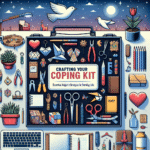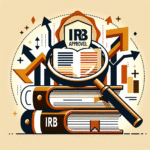
Breaking the Cycle: How to Identify and Cope with PTSD Triggers – The Essential Guide
Introduction
Imagine living in a world where the past continually intrudes upon the present, where every sound, sight, or smell can whisk you back to an overwhelming moment of fear or heartbreak. This is the reality for many individuals battling Post-Traumatic Stress Disorder (PTSD). It may feel impossible to reclaim control over one’s life, but understanding and managing PTSD triggers is essential for recovery. In this article, we’ll delve into Breaking the Cycle: How to Identify and Cope with PTSD Triggers, providing valuable insights and practical strategies that can help individuals reclaim their lives from the grips of trauma.
Understanding PTSD and Its Triggers
What is PTSD?
Post-Traumatic Stress Disorder is a mental health condition that can arise after experiencing or witnessing a traumatic event. Commonly associated with military veterans, PTSD can affect anyone who has been exposed to life-threatening situations, assaults, accidents, or natural disasters.
What Are Triggers?
PTSD triggers are stimuli that provoke memories or flashbacks of the traumatic event. These can be:
- Sensory Triggers: Sounds, smells, or sights that remind the individual of the trauma.
- Emotional Triggers: Situations or feelings that evoke memories of fear, helplessness, or horror.
- Contextual Triggers: Specific environments or places that are associated with the traumatic experience.
Case Study: Sarah’s Journey
Take Sarah, who served as a medic in a war zone. After returning home, she found herself overwhelmed at unexpected noises like fireworks, which triggered vivid flashbacks of the trauma she experienced in combat. Recognizing the nature of her triggers was her first step toward recovery, allowing her to seek therapeutic assistance and develop coping strategies.
Breaking the Cycle: Identifying PTSD Triggers
Self-Reflection and Awareness
The first step to Breaking the Cycle: How to Identify and Cope with PTSD Triggers is cultivating self-awareness. Journaling can be a powerful tool for this process. Keeping track of your emotions and circumstances surrounding them can help identify patterns associated with your triggers.
Tips for Journaling
- Write daily entries about your feelings and examine what was happening around you at those times.
- Note physical sensations that accompany strong emotions, such as heart rate or sweat.
- Identify any recurring themes, places, or people that seem to trigger emotional responses.
Pay Attention to Your Environment
Your surroundings can greatly influence your mental health. Take note of specific locations, people, or situations that elicit strong emotional reactions. By doing so, you’ll better understand your triggers and can start to work on strategies for managing them.
Table 1: Common Environmental Triggers
| Trigger Type | Examples | Coping Strategies |
|---|---|---|
| Noises | Fireworks, sirens, shouting | Use noise-canceling headphones |
| Places | Hospitals, combat zones | Gradual exposure therapy |
| People | Veterans, authority figures | Role-playing conversations |
Physical and Emotional Reactions
Being aware of your body’s reaction to trauma is crucial. PTSD triggers can lead to heightened physical responses, including increased heart rate, sweating, or even a sense of dissociation. Learning to recognize these signs can help in developing coping strategies.
Coping Strategies for Managing PTSD Triggers
Grounding Techniques
Grounding techniques can help redirect your focus from distressing thoughts to the present moment. Here are some effective grounding strategies:
- 5-4-3-2-1 Exercise: Identify 5 things you can see, 4 you can touch, 3 you can hear, 2 you can smell, and 1 you can taste.
- Deep Breathing: Practice taking slow, deep breaths to help calm your nervous system.
Case Study: John’s Grounding Practice
John, a survivor of a car crash, often found himself panicking when driving. By practicing deep breathing and grounding exercises, he gradually regained control over his driving anxiety, allowing him to drive short distances without panic.
Relaxation Techniques
Incorporating relaxation techniques into your daily routine can help mitigate stress and anxiety:
- Progressive Muscle Relaxation: Tense each muscle group for a few seconds, then release to relieve tension.
- Mindfulness Meditation: Focus on your breath and observe your thoughts without judgment.
Table 2: Effective Relaxation Techniques
| Technique | Description | How It Helps |
|---|---|---|
| Progressive Muscle Relaxation | Tensing and relaxing muscle groups | Reduces physical tension |
| Mindfulness Meditation | Practicing breathing awareness | Enhances emotional regulation |
| Visualization | Imagining a calm, peaceful environment | Provides mental escape |
Professional Help
Consider reaching out to a mental health professional specializing in trauma. Therapies such as Cognitive Behavioral Therapy (CBT) and Eye Movement Desensitization and Reprocessing (EMDR) have been shown to be effective in treating PTSD.
Support Systems
Building a reliable support network is essential. Engaging friends, family, or support groups can provide emotional comfort and practical assistance in times of distress. Sharing experiences with others who understand can also foster healing.
Case Study: Emily’s Support Network
Emily found solace in a local support group for trauma survivors. By sharing her experiences and listening to others, she discovered new strategies for coping and felt less isolated in her struggles.
Practical Steps for Preventing Triggers
Creating Safe Spaces
Developing a physical and emotional safe space can help you feel protected from triggers. Decorate your space with calming colors and comforting items. It should be a refuge where you can retreat to recharge and ground yourself.
Planning Ahead
If you anticipate a potentially triggering situation, take preemptive measures:
- Prepare coping strategies in advance.
- Discuss your needs with trusted individuals who can support you.
- Avoid known triggers when possible, and gradually introduce them in controlled settings.
Table 3: Planning for Triggering Situations
| Situation | Preparation Strategies | Coping Techniques |
|---|---|---|
| Family gatherings | Communicate with family members | Plan to leave if overwhelmed |
| Crowded places | Visit during off-peak times | Use headphones or focus on breathing |
| Public speaking engagement | Rehearse and visualize successful outcomes | Use grounding techniques beforehand |
Conclusion
Breaking the Cycle: How to Identify and Cope with PTSD Triggers is a powerful journey that can lead to renewed hope and healing. By understanding your triggers through self-reflection, using effective coping strategies, and building a solid support network, you can take significant strides toward reclaiming your life from PTSD. Remember, while the road to recovery may be challenging, every step you take is a testament to your resilience and strength.
FAQs
1. What are the common signs of PTSD triggers?
Common signs include flashbacks, panic attacks, anxiety, and physiological reactions such as increased heart rate or sweating.
2. Can PTSD be completely cured?
While many individuals manage PTSD effectively and significantly reduce symptoms, it’s often a lifelong process for some. Ongoing management and coping strategies can help.
3. How long does it take to recover from PTSD?
Recovery times can vary widely based on the individual and their experiences. Many individuals see improvement within a few months when committing to therapy and coping strategies.
4. Are there support groups available for PTSD?
Yes, many organizations offer support groups for PTSD survivors, where individuals can share their experiences and coping strategies in a safe, understanding environment.
5. How can I support someone with PTSD?
Listen actively and offer emotional support without judgment. Encourage them to seek professional help and respect their boundaries.
By embracing the insights and strategies outlined in this article, individuals can take actionable steps toward Breaking the Cycle: How to Identify and Cope with PTSD Triggers, moving towards a brighter and more fulfilling future.














